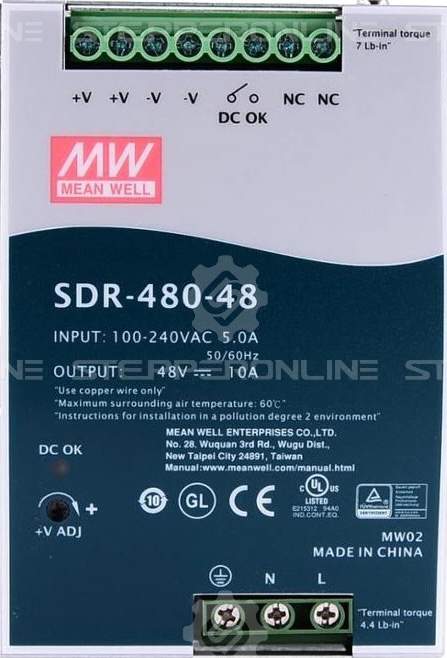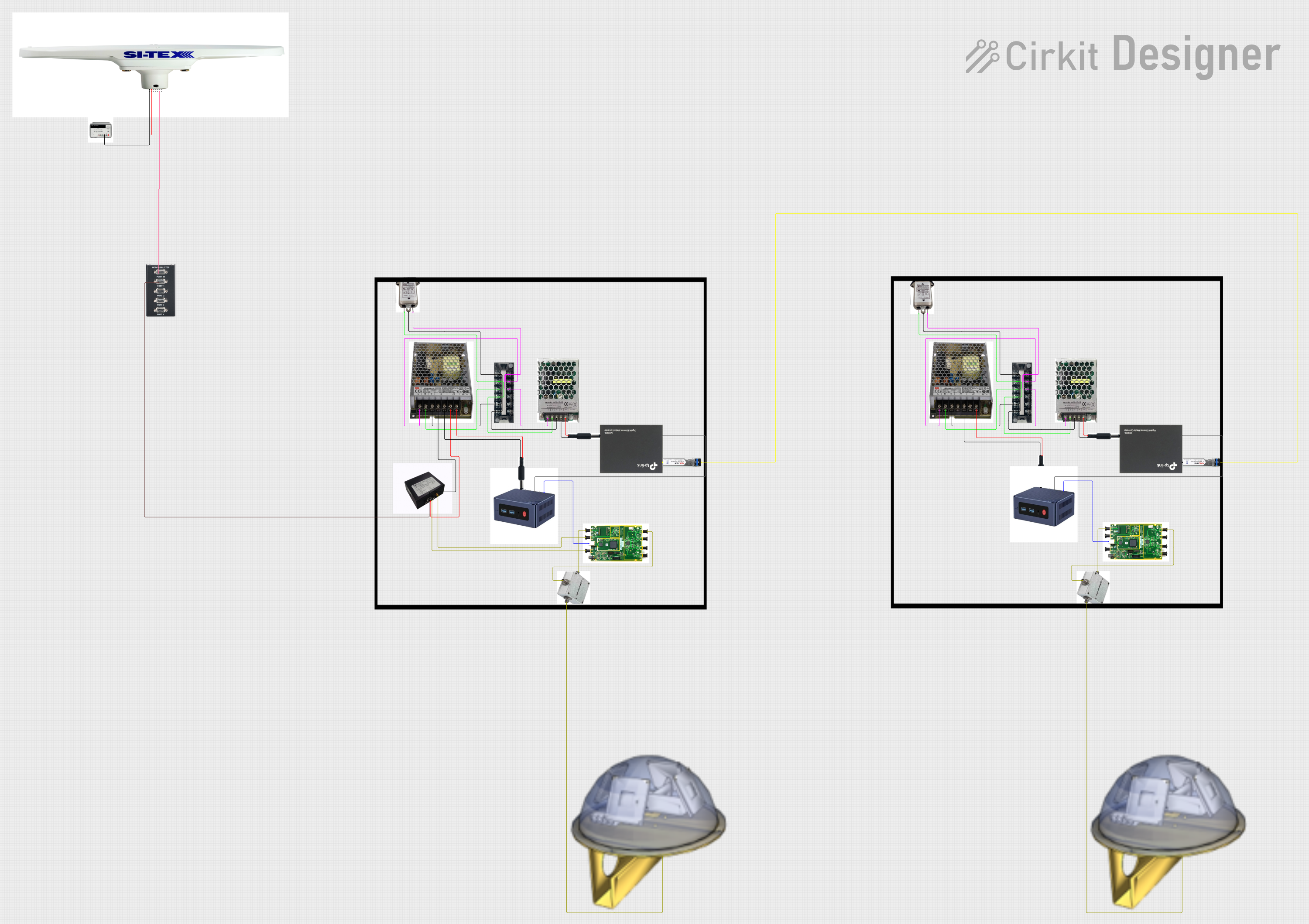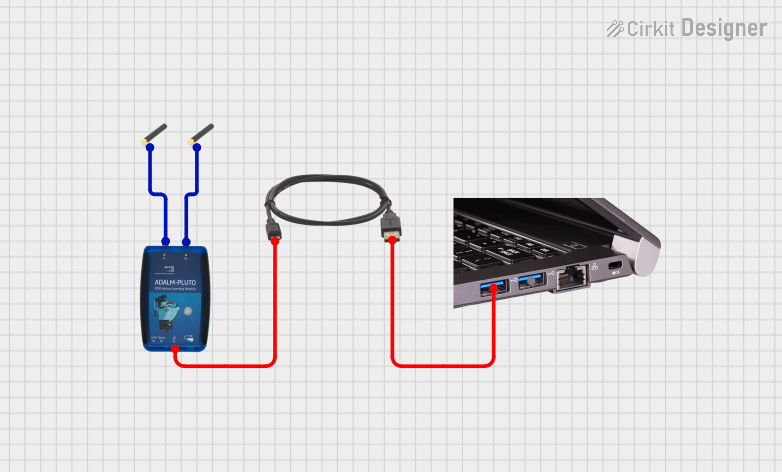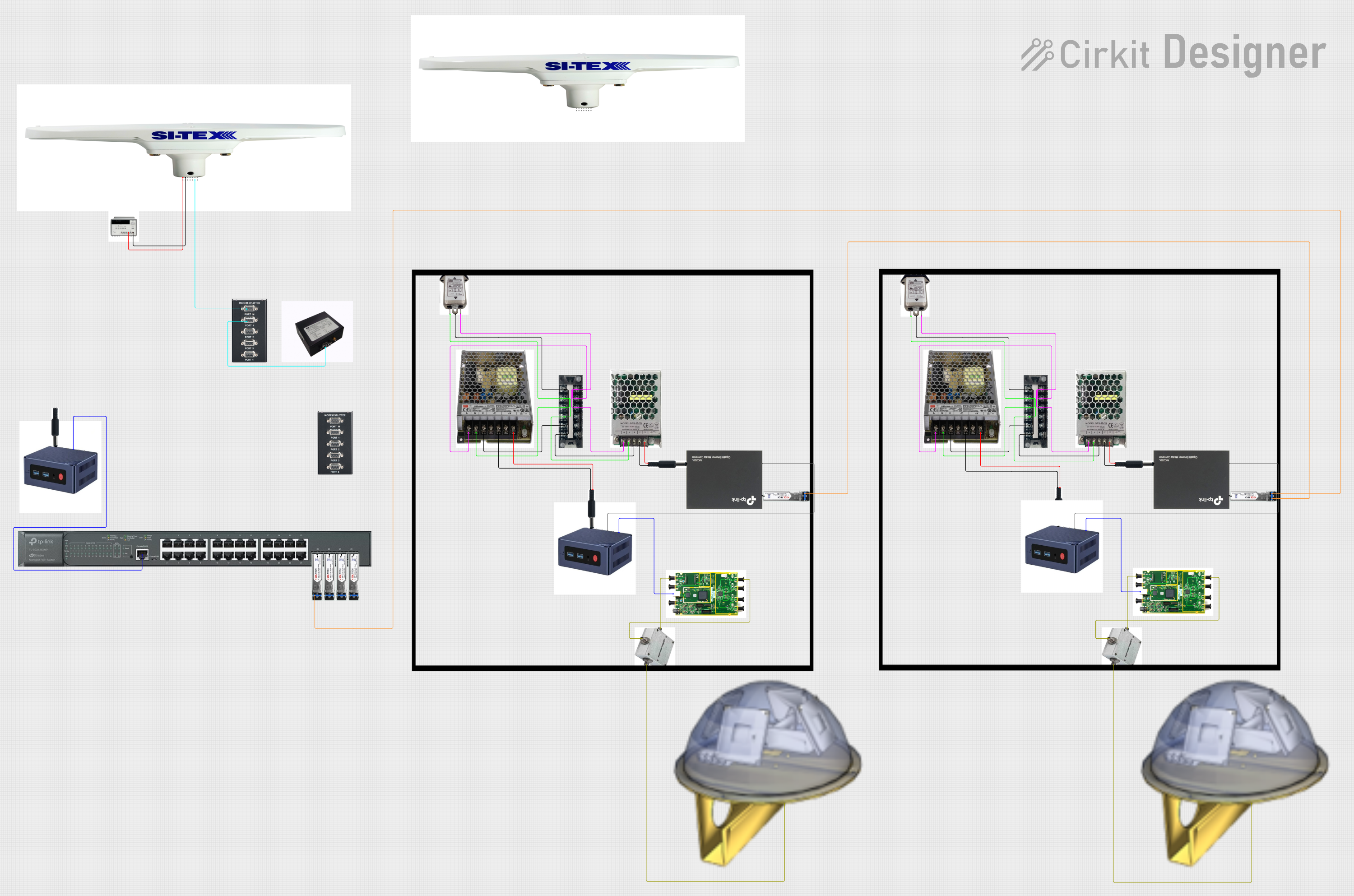
How to Use Mean Well SDR-480-48: Examples, Pinouts, and Specs

 Design with Mean Well SDR-480-48 in Cirkit Designer
Design with Mean Well SDR-480-48 in Cirkit DesignerIntroduction
The Mean Well SDR-480-48 is a high-performance, 480W, 48V single-output switching power supply designed for industrial applications. It is known for its high efficiency (up to 94%), compact size, and robust design, making it ideal for demanding environments. The SDR-480-48 is equipped with built-in protections against overvoltage, overcurrent, and short circuit, ensuring reliable operation and safety.
Explore Projects Built with Mean Well SDR-480-48

 Open Project in Cirkit Designer
Open Project in Cirkit Designer
 Open Project in Cirkit Designer
Open Project in Cirkit Designer
 Open Project in Cirkit Designer
Open Project in Cirkit Designer
 Open Project in Cirkit Designer
Open Project in Cirkit DesignerExplore Projects Built with Mean Well SDR-480-48

 Open Project in Cirkit Designer
Open Project in Cirkit Designer
 Open Project in Cirkit Designer
Open Project in Cirkit Designer
 Open Project in Cirkit Designer
Open Project in Cirkit Designer
 Open Project in Cirkit Designer
Open Project in Cirkit DesignerCommon Applications and Use Cases
- Industrial automation systems
- Factory equipment and machinery
- LED lighting systems
- Communication systems
- Renewable energy systems
- Control panels and instrumentation
Technical Specifications
The following table outlines the key technical specifications of the Mean Well SDR-480-48:
| Parameter | Value |
|---|---|
| Input Voltage Range | 90-264VAC / 127-370VDC |
| Output Voltage | 48VDC |
| Output Current | 10A |
| Output Power | 480W |
| Efficiency | Up to 94% |
| Operating Temperature | -25°C to +70°C |
| Dimensions | 85.5 x 125.2 x 128.5 mm |
| Weight | 1.3 kg |
| Cooling Method | Free air convection |
| Protections | Overvoltage, Overcurrent, Short Circuit |
| Certifications | UL, CE, CB, EAC |
Pin Configuration and Descriptions
The SDR-480-48 features screw terminal connections for input and output. The pin configuration is as follows:
Input Terminals
| Pin | Label | Description |
|---|---|---|
| 1 | L | Live AC input |
| 2 | N | Neutral AC input |
| 3 | FG | Frame ground (Earth) |
Output Terminals
| Pin | Label | Description |
|---|---|---|
| 1 | +V | Positive DC output |
| 2 | -V | Negative DC output (Ground) |
Usage Instructions
How to Use the SDR-480-48 in a Circuit
- Mounting: Secure the SDR-480-48 to a DIN rail or a flat surface using the provided mounting brackets. Ensure adequate ventilation around the unit for proper cooling.
- Input Connection:
- Connect the AC input wires to the
L(Live) andN(Neutral) terminals. - Connect the ground wire to the
FG(Frame Ground) terminal for safety.
- Connect the AC input wires to the
- Output Connection:
- Connect the load to the
+V(Positive) and-V(Negative) terminals. - Ensure the load does not exceed the maximum output current of 10A.
- Connect the load to the
- Power On:
- After verifying all connections, apply AC power to the input terminals.
- The green LED indicator on the unit will light up, indicating normal operation.
Important Considerations and Best Practices
- Input Voltage: Ensure the input voltage is within the specified range (90-264VAC). Operating outside this range may damage the unit.
- Load Regulation: Maintain the load within the rated output current (10A) to prevent overloading.
- Ventilation: Install the unit in a well-ventilated area to prevent overheating. Avoid obstructing the ventilation holes.
- Wiring: Use appropriately rated wires for both input and output connections to handle the current safely.
- Protection: The SDR-480-48 includes built-in protections, but external fuses or circuit breakers are recommended for additional safety.
Example: Connecting to an Arduino UNO
The SDR-480-48 can be used to power an Arduino UNO and other peripherals. Below is an example wiring setup:
- Connect the
+Vterminal of the SDR-480-48 to the VIN pin of the Arduino UNO. - Connect the
-Vterminal of the SDR-480-48 to the GND pin of the Arduino UNO. - Ensure the output voltage is set to 48V (default) and use a DC-DC step-down converter to reduce the voltage to 7-12V for the Arduino UNO.
Sample Arduino Code
// Example code to blink an LED connected to pin 13 of the Arduino UNO
// Ensure the SDR-480-48 is properly connected to the Arduino's VIN and GND pins
void setup() {
pinMode(13, OUTPUT); // Set pin 13 as an output
}
void loop() {
digitalWrite(13, HIGH); // Turn the LED on
delay(1000); // Wait for 1 second
digitalWrite(13, LOW); // Turn the LED off
delay(1000); // Wait for 1 second
}
Troubleshooting and FAQs
Common Issues and Solutions
No Output Voltage:
- Cause: Input power is not connected or is outside the specified range.
- Solution: Verify the input voltage and connections to the
LandNterminals.
Overload Protection Triggered:
- Cause: The connected load exceeds the maximum output current (10A).
- Solution: Reduce the load to within the rated output current.
Overheating:
- Cause: Insufficient ventilation or operation in a high-temperature environment.
- Solution: Ensure proper airflow around the unit and operate within the specified temperature range.
LED Indicator Off:
- Cause: No input power or internal fault.
- Solution: Check the input power and connections. If the issue persists, contact Mean Well support.
FAQs
Q1: Can the SDR-480-48 be used in parallel with other power supplies?
A1: Yes, the SDR-480-48 supports parallel operation for increased power output. Follow the manufacturer's guidelines for proper configuration.
Q2: Is the output voltage adjustable?
A2: Yes, the output voltage can be adjusted within a range of 48-55V using the built-in potentiometer.
Q3: Can the SDR-480-48 be used in outdoor environments?
A3: The SDR-480-48 is designed for indoor use. For outdoor applications, ensure it is housed in a weatherproof enclosure.
Q4: What type of fuse should be used for input protection?
A4: Use a fuse rated for 10A at 250VAC for input protection.
By following this documentation, users can effectively integrate the Mean Well SDR-480-48 into their projects and ensure reliable operation.